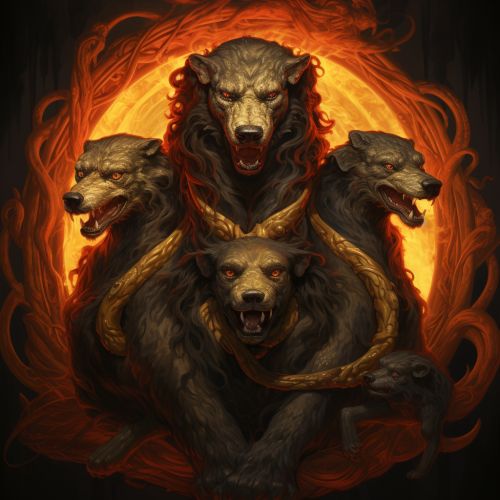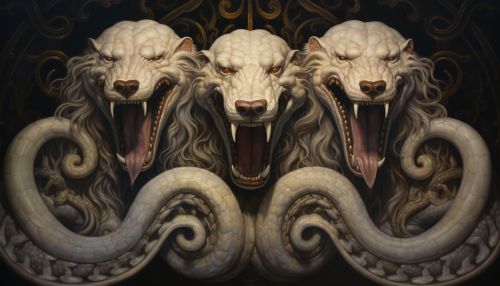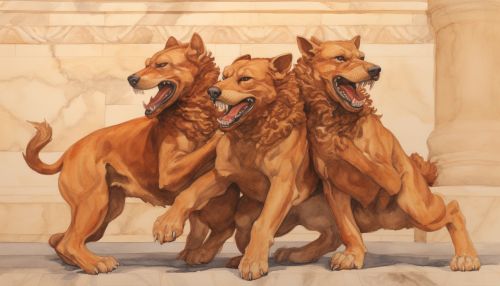Cerberus
Origins and Mythology
In Greek mythology, Cerberus is a multi-headed dog that guards the gates of the Underworld to prevent the dead from leaving. Cerberus is often depicted with three heads, each of which is said to represent the past, the present, and the future. The creature is usually depicted as being ferocious and terrifying, with a mane of live serpents and a tail that ends in a serpent's head.


The exact origins of Cerberus are somewhat unclear, but it is generally believed that he is the offspring of the monster Typhon and the half-serpent, half-woman creature Echidna. This would make Cerberus a sibling to other monstrous creatures from Greek mythology, including the Hydra, the Chimera, and the Nemean Lion.
Role in Greek Mythology
Cerberus plays a significant role in several myths and legends in Greek mythology. One of the most well-known stories involving Cerberus is the twelfth and final labor of Heracles (Hercules). In this labor, Heracles was tasked with capturing Cerberus and bringing him to the surface world without using any weapons. After wrestling with Cerberus and enduring the creature's poisonous bite, Heracles was able to subdue the beast and complete his task.
In another myth, the hero Orpheus encounters Cerberus on his journey to the Underworld to retrieve his deceased wife, Eurydice. Orpheus was able to pass by Cerberus by charming him with his music, demonstrating the power of art and beauty over brute force and fear.
Symbolism and Interpretations
Cerberus is often interpreted as a symbol of the insurmountable barrier between the world of the living and the world of the dead. His three heads are sometimes thought to represent youth, adulthood, and old age, or birth, life, and death, symbolizing the inexorable passage of time.
In a more general sense, Cerberus can be seen as a symbol of vigilance, loyalty, and protection. Despite his fearsome appearance, Cerberus is ultimately a guardian, tasked with protecting the Underworld and ensuring that the dead do not escape.
Cerberus in Art and Literature
Cerberus has been a popular figure in art and literature throughout history. He is often depicted in ancient Greek vase paintings, where he is shown as a terrifying, multi-headed beast. In more modern times, Cerberus has appeared in various forms of media, including books, films, and video games.
In Dante Alighieri's Divine Comedy, Cerberus appears in the third circle of Hell, where he torments the gluttonous by tearing at them with his claws and teeth. In J.K. Rowling's Harry Potter series, a large, three-headed dog named Fluffy is a clear reference to Cerberus.


